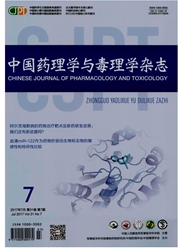

 中文摘要:
中文摘要:
目的探讨双酚A(BPA)对胚胎干细胞(ESC)分化潜能的影响,为合理评价BPA的安全性提供实验基础。方法制备及培养的小鼠胚胎成纤维细胞(MEF)和小鼠ESC,用BPA 0.1,1,10,100和1000μmol·L-1持续培养8 d,CCK-8法检测MEF和ESC细胞存活率并计算IC50;通过实时荧光定量PCR检测ESC中α肌球蛋白重链m RNA表达并计算其半数最大分化抑制浓度(ID50)。悬滴悬浮法培养的拟胚体,用BPA 0.001,0.01,0.1和1μmol·L-1持续培养10 d,实时荧光定量PCR检测拟胚体各胚层标志基因表达的变化。结果 BPA对小鼠ESC的IC50为5.22×10-4mol·L-1,对MEF的IC50为6.25×10-4mol·L-1,对小鼠ESC体外心肌细胞定向分化的ID50为7.0×10-7mol·L-1。BPA 0.001和0.01μmol·L-1可以上调拟胚体的中胚层标志基因胎肝激酶1和球蛋白转录因子1的表达。结论 BPA属于强胚胎毒性化合物。低浓度BPA对小鼠ESC分化为中胚层细胞有促进分化的作用。
 英文摘要:
英文摘要:
OBJECTIVE To explore the effect of bisphenol A (BPA) on the differentiation potential of embryonic stem cells, and provide an experimental basis for evaluation of safety of BPA. METHODS Mouse embryonic fibroblasts (MEFs) and embryonic stem cells (ESCs) were treated with BPA 0.1, 1, 10, 100 and 1000 μmol.L-1 for 8 d respectively. The viability of MEFs and ESCs was measured by CCK-8 and lC50 was calculated. The mRNA expression of α-myosin heavy chain in ESCs was tested by RT-PCR to determine lD50 . The embryonic body cultured by suspension method was treated with BPA 0.001, 0.01, 0.1 and 1 μmol.L-1 for 10 d respectively. The changes of marked genes in each blastoderm were detected by RT-PCR. RESULTS lC50 of BPA to mouse ESCs was 5.22×10-4 mol.L-1 , and to MEFs was 6. 25 × 10-4 mol.L-1 . lD50 of BPA to mouse ESCs differentiating to cardiomyocytes was 7.0×10-7 mol.L-1 . BPA 0.001 and 0.01 μmol.L-1 upregulated the expression of the marked genes of mesoderm, fetal liver kinase-1 and globin transcription factor 1. CONCLUSION BPA is a strong embry-otoxic compound. BPA of low concentration can promote the differentiation of mouse ESCs to mesoderm.
 同期刊论文项目
同期刊论文项目
 同项目期刊论文
同项目期刊论文
 期刊信息
期刊信息
